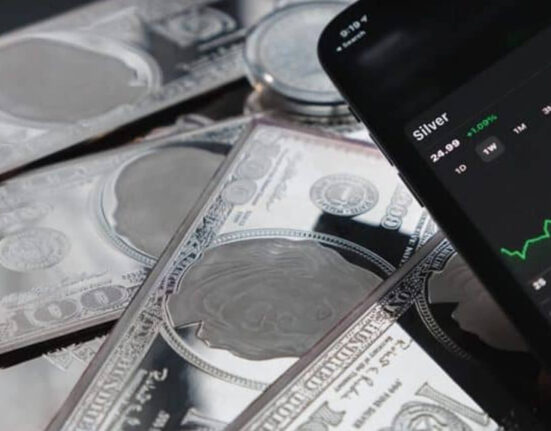Introduction to the Gold Standard: key features of the system
The gold standard was a monetary system in which the value of money was directly linked to a specific amount of gold. This system began to dominate in the early 19th century when it became clear that gold, as a natural and scarce metal, provided financial stability. Under this system, currency could be exchanged for a fixed quantity of gold, ensuring trust and stability in the monetary system. Nations established a ratio between the amount of gold in their reserves and the volume of money circulating in the economy. This direct connection facilitated international trade and reduced currency risks.Quote:
“Money without gold is worthless,” once said Grover Cleveland, the 24th President of the United States. This statement captures the core idea of the gold standard: money is only as valuable as the gold that backs it.
Gold as the Only Fundamental Commodity Enabling Exchange Between Nations
Gold was chosen as the fundamental commodity because of its unique characteristics—scarcity, durability, and practicality. In the 19th century, it became the key instrument in international trade transactions, providing a universal unit of value. When currency was tied to gold, nations could trade without the fear of fluctuating exchange rates. This facilitated international trade and interconnected the global economy. Under the gold standard, people trusted the system, confident that every dollar was backed by real wealth.Story:
During the period of rapid trade expansion across Europe and America, the English economist Thomas Gresham, in the 16th century, warned that “bad money drives out good.” Gresham was among the first to highlight the dangers of unstable currencies—a warning that later influenced the adoption of gold as the foundation of the global trading system.
The British Pound: the global reference currency under the gold standard
Britain was the first country to adopt the gold standard in the early 19th century. Sir Isaac Newton, who served as Master of the Royal Mint, set the foundation for this system in 1717 by fixing the exchange rate between the pound and gold. The British pound became the reference currency for other nations, as many European countries followed the same path. Thus, the British Empire—with its vast colonial holdings—was able to manage global trade routes, easily exchange currencies, and maintain stability.Quote:
“The British Empire is not just a nation but a world economic power,” wrote Winston Churchill in one of his speeches. This reflected the stability provided by the gold standard, as nations looked to Britain as the global economic leader.
Gold as the Foundation of the Global Trade System Before World War I
The gold standard enabled the rapid expansion of global trade in the second half of the 19th century, especially during the Industrial Revolution. Merchants could easily agree on prices and quantities of goods since the currencies of all major trading nations were tied to gold. Thanks to its stability and predictability, the global trading system remained strong even as trade volumes increased dramatically.Interesting Fact:
During the era when merchants from London, New York, and Paris traveled across the world, faster transport routes—railways and ships—began to develop in the U.S. and Britain. This allowed nations to ship goods to other continents without major risks from currency fluctuations. All of this was made possible by the stability guaranteed by the gold standard.

PURCHASE OF GOLD. Free information. You can get up to 1/3 more precious metals!
- How can you buy gold and silver for investment?
- Much cheaper.
- We discover how you can reduce seller commissions.
- Highest quality. 999/1000. Good delivery.
Information worth its weight in gold. Completely free
It is not worth buying a single gram until you have this information.
Enter your name and email address now to participate for free.
How Much Gold Was Needed to Back the Currencies in Circulation?
Each country determined the amount of gold that needed to be held in its reserves to back the value of the currency in circulation. For example, the United States established that one dollar was backed by 1/35 of an ounce of gold, meaning that for every dollar in circulation, a corresponding amount of gold had to be held in federal vaults. In this way, every single dollar had real value in gold, ensuring stability and public trust.Interesting Fact:
At the beginning of the 20th century, approximately 400 million ounces of gold were required to back all the currency circulating in the United States. This amount would be equivalent to more than $700 billion worth of gold today.
The Gold Standard in the U.S.: “Money Has Value Only Because of Gold”
For the United States, the gold standard represented the key to stability during the nation’s transition from an agricultural to an industrial economy. Alexander Hamilton, the first U.S. Secretary of the Treasury, believed that gold would promote greater stability and help position the country as a global economic power. Gold allowed the United States to establish monetary credibility, which was essential for its rapid growth.
How the Gold Standard Stimulated Global Economic Growth in the 19th Century
The adoption of the gold standard by most global economies fueled exponential growth in trade and industry. With precisely defined exchange rates and stable currencies, businesses and nations were able to build stronger economic foundations. The Industrial Revolution benefited greatly from these advantages, as investments in infrastructure and transportation could be financed without excessive risk from currency fluctuations.
How Countries Stabilized Their Economies with a Gold-Based System
Gold served as a natural constraint for governments, as they could not simply print more money without holding a corresponding amount of gold to back it. This prevented excessive borrowing and allowed for stable economic policies. Nations had to maintain a balance between public debt, interest rates, and economic growth, which strengthened trust in national currencies.Quote:
“Without gold, there is no money,” was a famous saying used by John Maynard Keynes as a warning of how the monetary system could collapse without the backing of gold.
You can save thousands of euros!
Do not buy a single gram of gold or silver until you have read this gold valuable information.
- Did you know that you can pay up to 59% more than the market price of gold?
- How can you significantly reduce the price of gold and silver?
- You can get up to + 1/3 more precious metals for your savings!
- Physical investment gold and silver of the highest quality. Good delivery.
BONUS! Extremely tax efficient: you pay absolutely no tax!
Enter your name and email address now to participate for free.

Gold as a Means of Maintaining Price Stability and Controlling Inflation
Because every dollar was backed by gold, inflationary pressures were limited. Nations were naturally motivated to maintain balanced economic policies, as any additional money printed had to be supported by new gold reserves. This stability prevented price surges, since the amount of money in circulation was always restricted.
Examples of Successful Economies Under the Gold Standard (U.S., Great Britain)
The United States and Great Britain both achieved significant economic success under the gold standard. Gold provided greater stability in trade, industry, and politics. As a global superpower in the 19th century, Great Britain attained remarkable commercial dominance. Thomas Gresham, a 16th-century economist, emphasized the importance of financial stability and the crucial role of gold in maintaining it.







